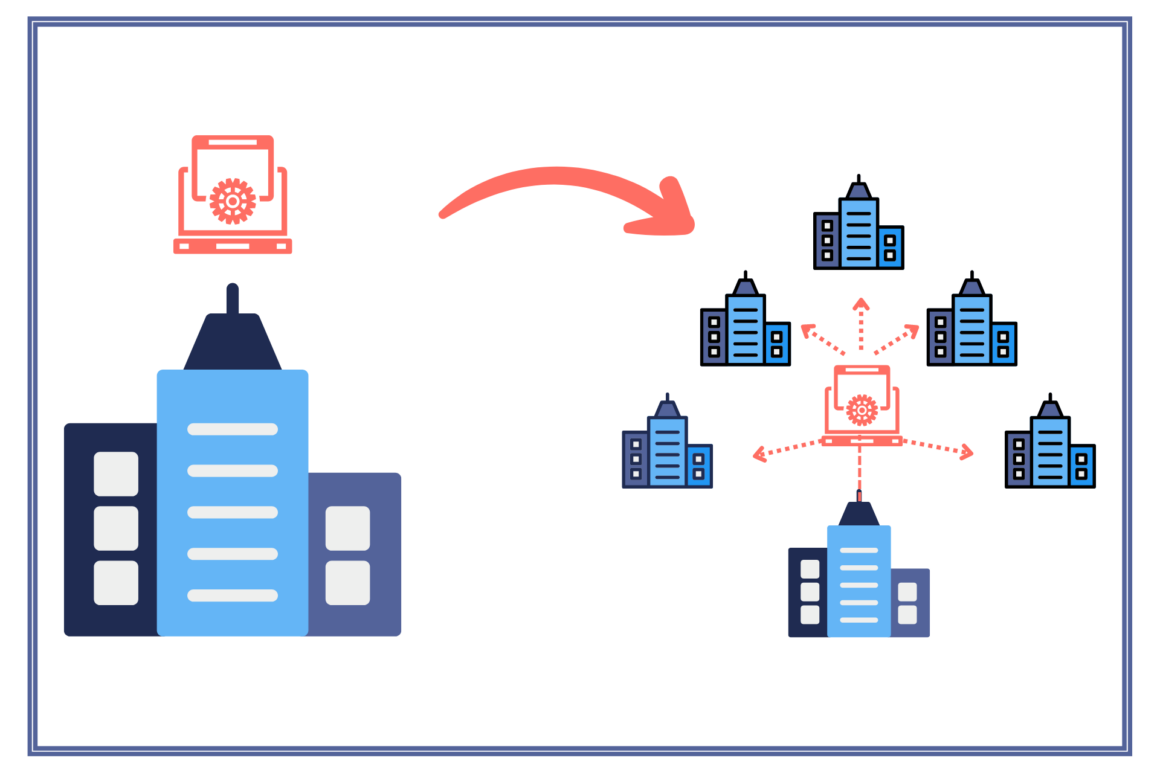In today’s rapidly evolving digital landscape, businesses are under constant pressure to adapt to new technologies and trends in order to stay relevant and competitive. One of the ways that established businesses can stay ahead of the curve is by transforming their in-house applications into digital products that are available for worldwide markets.
This process can be challenging, requiring significant resources, expertise and a deep understanding of customer needs and market trends.
However, the rewards can be substantial, including increased revenue, improved customer satisfaction, and enhanced brand recognition.
In this blog, we’ll explore the key steps, challenges and mindset shifts involved in transforming in-house applications into digital products that can help businesses succeed in today’s global economy.
We interviewed a top award-winning architecture practice in the UK that went the extra mile to develop a digital emission reduction tool for sustainable-designed buildings.
The digital tool is named H\B:ERT, and was developed with the help of the Fabrit team.
This latest phase of H\B:ERT’s development has won the practice the AJ100 Best Use of Technology Award. The AEC community received the tool with enthusiasm, helping our partners consolidate their position as leaders in the British AEC sector once again.
The interview below sheds light on the initial needs and requirements, the challenges they faced along the way and how developing a digital product has helped increase brand recognition and get more clients.

Q: What is the rationale behind the decision of expanding beyond an in-house app, into the product market?
A: We feel the existing tools out there are missing opportunities to facilitate decision key-making and are quite complex. We, therefore, felt there was a gap in the market.
Q: What are the biggest challenges when taking the internal application to a market-ready digital product?
A: The tool needs to be versatile for many more types of applications than the internal tool, as it is currently tailored to our internal business model, scale and type of projects and components.
Q: What are the business pillars or mindsets that need to be challenged/changed in order to develop a market-ready digital product?
A: In order to develop a market-ready digital product businesses must shift from the belief that products should be perfect before launching and adopt an iterative approach focused on a minimum viable product. They should prioritise customer satisfaction and growth over short-term profits, and be open to collaboration and partnerships to develop innovative products that are relevant to current industries. These changes enable businesses to develop digital products with long-term viability and market appeal.
Q: What resources or knowledge do you believe you need other than what you already have in the company?
- MEP engineering speciality to integrate the operational energy inputs and outputs of the tool.
- Structural inputs for the notional building.
- Retrofit expertise to integrate and align the operational energy and the building fabric for the notional building.
Q: How do you think the Fabrit team can help with implementing the needs for the new digital product? What values and assets do you think they bring to the table?
A: Our collective previous working relationship and knowledge of the industry are invaluable and have given Fabrit an excellent insight into the sector and foundation for the new tool.
Q: In your opinion, how did the collaboration with Fabrit help shape the product from the initial idea to the form that we see today? How do you think Fabrit’s input was an essential part of the product ideation and development?
A: H\B:ERT is the product of a long-standing collaboration between researchers, architects and specialists. Because of this it is backed by research, considerate of designers, and technically robust. Without each individual element, HBERT would not be shaping up to be the product it is today. Fabrit has been instrumental in translating sustainability calculations, architect-led processes and technical requirements. They have led the way with their excellent digital and web technology understanding of how the vast amounts of data in the back end should be stored, handled and interacted with by the end client.
Q: What are the delivery metrics you would look to decide with Fabrit Global?
A:
- Regularity updates to test and comment during Beta and MVP.
- The number of users.
Q: How do you plan to validate the product with the target market?
A: The beta testing group and the industry partners are market-leading and their feedback will be invaluable and key to the success so we need to make sure the beta is a good product. They are likely to be ambassadors if they consider it a good tool. We would seek to get RICS seal of approval and the London Plan to include it in their approved software. We could potentially reach out to experts such as Simon Sturgis or Jane Anderson, or leverage our partners, Introba, Ramboll and Elliot Wood
Q: How is the industry benefiting from the H\B:ERT product?
A: As it is an open-source tool, it has been very accessible and used by many types of companies (sizes) and university students.
Q: How does the product help your company consolidate its position in the AEC industry?
A: H\B:ERT is now a fairly well-known brand and Hawkins\Brown is fairly well-recognized for the work we are doing in the whole life carbon field. We often use it in our pitches to demonstrate our expertise in this area.
In conclusion, transforming in-house applications into digital products available for the worldwide markets can be a challenging but also rewarding for businesses. It requires a shift in mindset and approach, prioritizing customer satisfaction and long-term viability over short-term profits. Collaborating with experienced technology partners such as Fabrit Global can be incremental in translating sustainability calculations, architecture-led processes, and technical requirements. Delivery metrics such as regular updates and user numbers can help measure success, while industry validation can further consolidate a company’s position in the AEC industry. Overall, the H\B:ERT product is an excellent example of the benefits of developing market-ready digital solutions, accessible to a broad range of companies and university students, and demonstrating Hawkins\Brown’s expertise in the whole life carbon field.
Are you ready to upgrade your business process to new digital heights?





